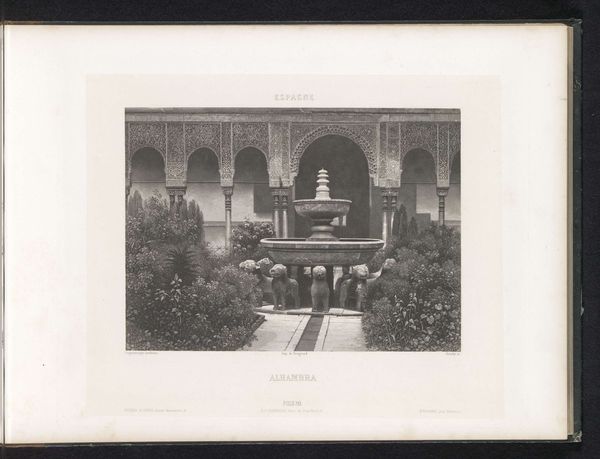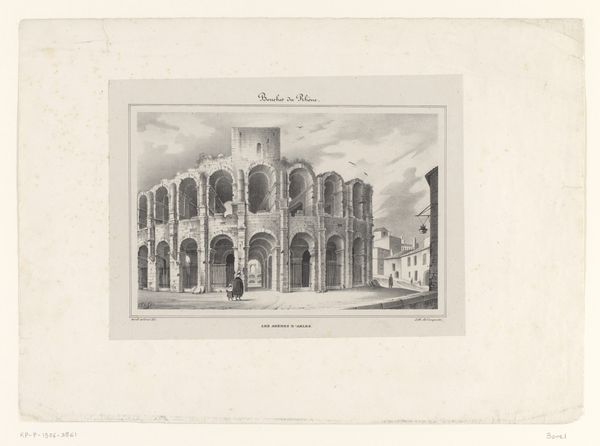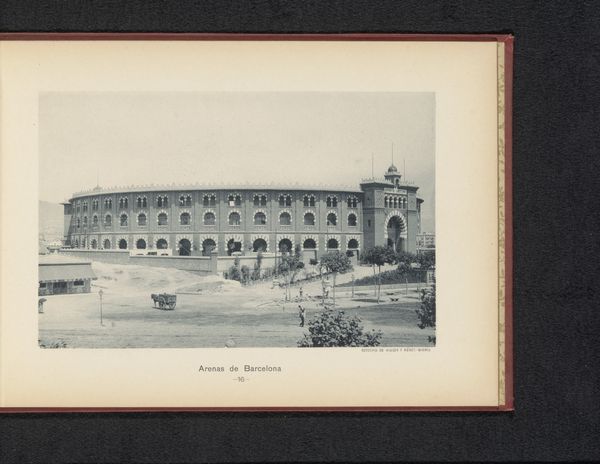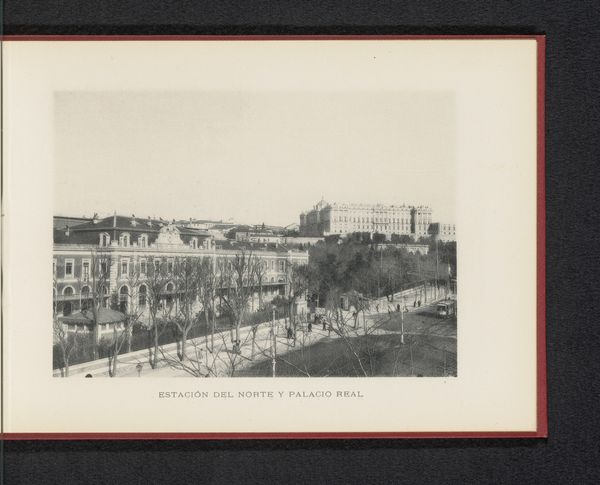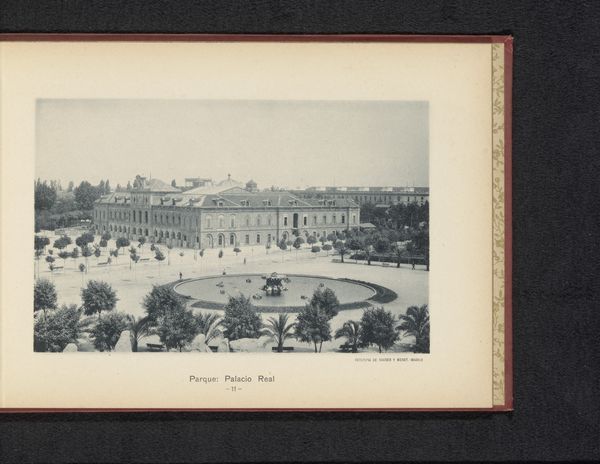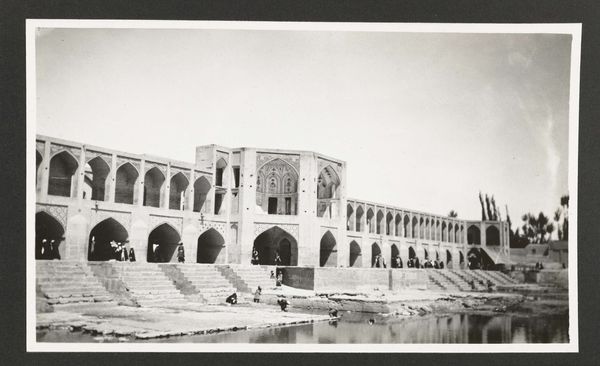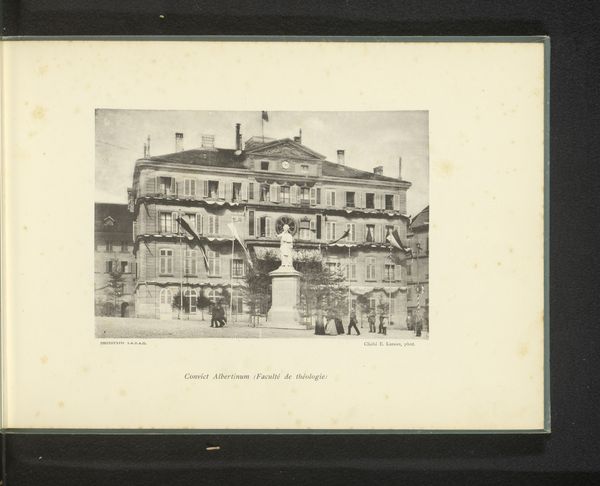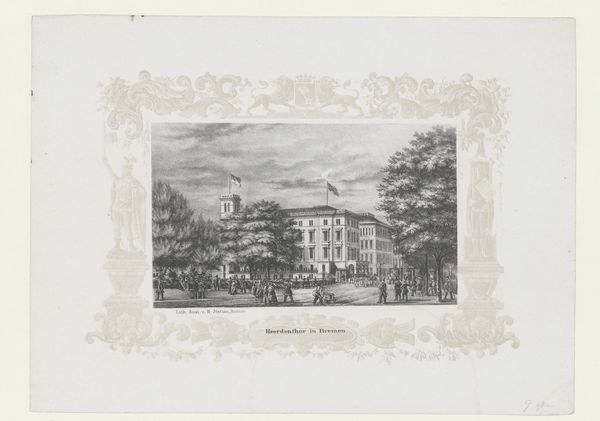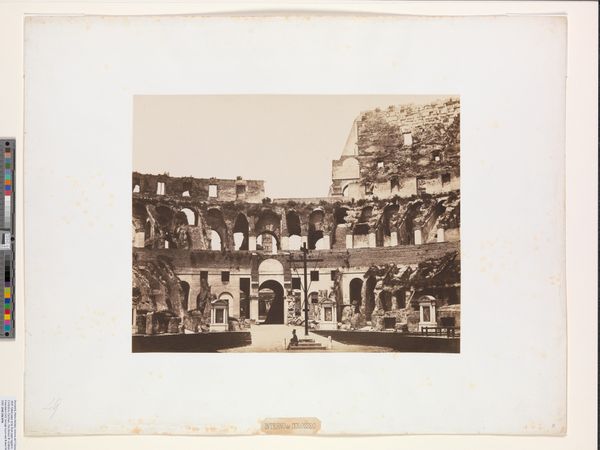
print, etching, paper
#
neoclacissism
#
ink paper printed
# print
#
etching
#
landscape
#
paper
#
carved into stone
#
ancient-mediterranean
#
cityscape
#
watercolor
Dimensions: height 148 mm, width 204 mm
Copyright: Rijks Museum: Open Domain
Curator: Let’s consider this print, Exterieur van de Arena van Nîmes, an etching made by Sigismond Himely, sometime before 1841. What is your initial read of the image? Editor: The first impression is powerful, almost melancholy. The sheer size of the arena is imposing, and the muted tones of the print lend it a certain weight. I am also intrigued by the figures populating the arena’s perimeter. Curator: Yes, the figures, juxtaposed against this ancient architecture, invite questions about cultural memory and resilience. Note the contrast between the smooth arcades of the arena, a feat of Roman engineering, and the trees softened with dense foliage on the side. The whole image seems designed to evoke the power of an empire long since dismantled. Editor: Definitely, the arena looms like a persistent emblem of Roman power, coexisting with the French subjects occupying its grounds. Beyond that initial visual effect, I am fascinated by the way that Himely frames the past, creating an atmosphere charged with implications about colonial subjugation, which is not as widely examined as a component of French art as it could be. What’s most telling to me is how an artwork from the earlier 19th century participates in cultural narratives of nationhood through these Roman architectural forms. Curator: Precisely, it encourages a dialogue between the ancient world and the then-contemporary world of France, suggesting enduring ideas of governance and spectacle and also what they mean to citizens of a more enlightened Republic. Think about how arenas have served as stages for political rhetoric and performance – a phenomenon very familiar to anyone who follows French affairs. Himely has offered us not simply a picture of Nîmes, but an index for larger narratives about France's place within a grand, European trajectory. Editor: Absolutely. He offers us a lens through which to understand how history becomes myth. This scene prompts viewers to remember how Roman symbols might contribute to or question a developing modern sense of nationhood, not to mention masculinity and warfare, back then. In my opinion, it’s fascinating how historical layers build upon one another through carefully chosen visual codes. Curator: I agree. Looking at it now, I see in this rendering a potent contemplation of our own moment and our engagement with legacies inherited. Editor: A powerful reminder that buildings and images carry with them histories that linger, urging ongoing conversations.
Comments
No comments
Be the first to comment and join the conversation on the ultimate creative platform.
